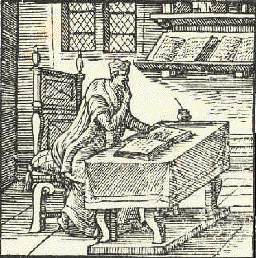
TOwards the close of the twilight period, however, we come to a group of dramatic work produced by known or least named person , distinguished from the doggerel of the interludes and the starched sterility of the early blank verse play by the presence in almost all cases of considerable, and in one or two of all but the nights, gifts, equipment, and even define literary aim. All these men were probably, and all but one or two certainly of University training,an advantage less uniformly possessed by their immediate successors. For once the centre and source of a great literary movement in England was what it ought to have been- the two Universities. The literary developments of the time were actually firmed at Oxford or at Cambridge. but the vast majority of the distinguished writers of the time were University men; their friendships, which in eager discussion of literary novelties always ply so great part, were in many cases University friendships; the mighty group of playwrights who founded the English drama were called,
" University Wits"
In this honourable function Cambridge had a little priority and the predominance. Of great early dramatic group Marlowe, Greene, and Nash were Cambridge men, but Lily, Peele, and Lodge were Oxonian.
University Wits is a term invented by literary historians to identify a handful of writers, some well known, others less so, who first appeared in the early 1580s and had almost completely vanished from the record by the mid-90s. Some were students together at the Merchant Taylor’s School during the period when the boys performed plays for the Court. Some were together at Trinity College Oxford and then at the Inns of Court in the Holborne district of London. Some wrote poetry, some tales,
some plays, some all three. For some we have almost nothing but their reputations. All wrote in “pre-Shakespearean” styles that separated them from the writers of the previous “drab era.” As David Horne, author of the only biography of George Peele, puts it: “All were learnt and classical in their tastes and interested in courtly literature” (70). Several are the accepted authors of works that Shakespeare “rewrote” in the ’90s, and most of them have been assigned an assortment of the many anonymous works of that period.
Most interesting perhaps is how several of them are the favourites for authors of those Shakespeare plays that the so-called “disintegrators” like to assign to someone other than Shakespeare: George Peele and Robert Greene lead the field in this, but almost all of them have been assigned to all or part authorship of at least one of his plays by some Shakespeare scholar. In other words their styles in some places are so close to early Shakespeare that scholars can’t tell the difference.
The leading name is that of
Robert Greene (“died” 1592), poet, pamphleteer, proto-novelist and playwright. Though not the first to appear in print––his first pamphlet,
Mamillia, was registered with the Stationers in 1580, the year after John Lyly’s
Euphues––but he was the most prolific: 20 works published over the next 12 years (with a number of anonymous works attributed to him later). He was also the first to
disappear (I use the term advisedly) in 1592. Described by his fellow pamphleteers and even by himself as a profane and profligate ne’er do weel––something utterly belied by his works––Greene’s biography is too weak to take seriously. For these and other reasons, we (myself and one other
authorship scholar) believe that
the real Robert Greene was a front for a Court writer.
The second most prominent member of the group in terms of published material and talent is
Thomas Nashe (1567-1601). He and Greene should be credited with launching the
English periodical press as a viable industry. Their volley of pamphlets throughout the latter half of the 1580s and the early years of the ’90s showed the world that there was a market in England for serial publications of quality. Like his senior, Nashe’s works proclaim him as one of the most highly educated, erudite writers of his time, qualities his official biography doesn’t support. I stand with the Baconian Edward George Harman in claiming that Nashe was a front for Francis Bacon.
Most famous of all,
Christopher Marlowe (1564-1593) is not on every list (he attended Cambridge, not Oxford, and was never a student at the Inns), but he was obviously involved with some of the others. The popularity of his play
Tamburlaine in the late 1580s was what turned the London Stage into an industry strong enough and popular enough to withstand its enemies’ continuous efforts to take it down. His
assassination in 1593 by government agents was the opening bell for the disappearance of the entire group, who were all dead or fled shortly after (that is, all but Nashe, who continued to get published until 1599). It also proves that he was who he said he was, for no one would bother murdering a proxy, leaving the real writer to strike again under another name. In fact, for the most part his biography is a model for what we should expect to find for any gifted and popular writer of the period.
John Lyly (1553-1606) is the earliest of the Wits, both in age and in public awareness. The first thing to bear his name, the proto-novel
Euphues, the Anatomy of Wit, made him famous, both in his own time and ever after, carrying to a peak its ornate style, known ever since as
euphuism. Licensed in December 1578, published the following spring, it foretold the kind of literature that would be coming from the University Wits for the next decade. His name is also attached to a series of Court plays performed by the children’s companies throughout the ’80s. Lyly had attended Oxford (Magdalen), though earlier than the other Wits (BA 1573, MA 1575). However, like Greene and Nashe, his biography fails to support his claims to authorship, chiefly because although
Euphues was one of the most popular books of the time, and although he continued to live in London and was apparently in desperate need of work and money, it seems he produced nothing from the disbanding of Paul’s Boys in 1590 until his death in 1607––17 years of inexplicable silence.
Thomas Watson (1555-1592?), one of the first to arrive was also one of the first to vanish. Primarily a Latinist, his best known work in English is the
Passionate Century of Love, over a hundred poems, some translations, many in the style of 15th-century Italian poets, published in 1582 (and dedicated to the Earl of Oxford). A variety of things were published under Watson’s name including lyrics to madrigals set to music by William Byrd. However, despite the obvious popularity of the works published in his name, what we have in the way of a biography simply can’t support them. That both he and Robert Greene, another biographically-challenged writer, supposedly died within days of each other at the outset of the literary holocaust of the ’90s suggests that both were fronts for the same Court writer. (The only evidence for Watson’s death at that time is a single line in the parish register of St. Batholomew the Less. For Greene there’s nothing.)
George Peele (1556-1596) appears in the literary record at about the same time as Watson, both shortly after Greene. A graduate of Christ Church College Oxford (mat 1571, BA 1577, MA 1579), having returned to London, his home town, in 1581, he wrote for the Stage until 1590, at which point he broke with his earlier career as a Wit, providing official encomia and writing and directing pageants for the City and his alma mater. He’s credited with writing the only play to be identified with the first Blackfriars Theater (
The Arraignment of Paris) in 1581, while suggestions that he was the author of the various other plays claimed for him are too uncertain to take on faith
.
Thomas Lodge (1558-1625) connects with this group through all three factors: time, location, and works. Educated at the
Merchant Taylor’s School during the period when the students occasionally performed at Court, then at Oxford during the period that John Lyly and George Peele were attending (he got his BA in 1577 and his MA in 1581). Once out of college he became a member of
Lincoln’s Inn, located in the neighborhood of
High Holborn where Peele and others were also located. His first appearance in print in 1579 was in response to the Church-promoted attack by
Stephen Gosson on the playwriting Wits. Although his biographer has a poor opinion of his talent (Sisson 184-9), he did produce one work that was later turned into a masterpiece by Shakespeare:
As You Like It. But that he was more than a front is clear from the many mediocre tales published under his name and several serious translations and medical works he published later. As a contributor to the literary legacy of the University Wits he fades from the scene following the publication of his last pastoral tale in 1596, having turned to the study and practice of medicine that will dominate the rest of his life.
Thomas Kyd
(1558-1594) was a Londoner like Peele, and a student at the Merchant Taylor’s School during the same play-giving period as Thomas Lodge and Edmund Spenser. The son of a scrivener, what today we would call a professional secretary, there is little solid evidence that Kyd was ever much more than that for clients like Lord Strange. His authorship of the groundbreaking play
The Spanish Tragedy is based on nothing more than three words by Meres and a passing mention by
Thomas Heywood 30 years later, which, if nothing else, has made him a favorite with scholars as the purported author of dozens of anonymous works including the mythical
Ur-Hamlet. Arrested by Cecil’s agents in May 1593, Kyd was imprisoned and racked into turning state’s evidence against Marlowe. Though released following Marlowe’s assassination, he died the following year, shortly after the murder of their patron, Lord Strange.





